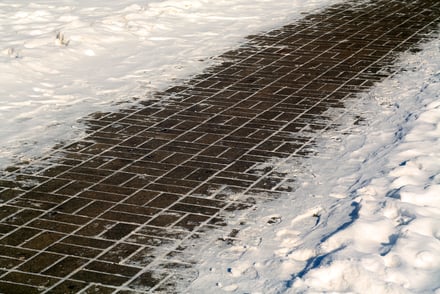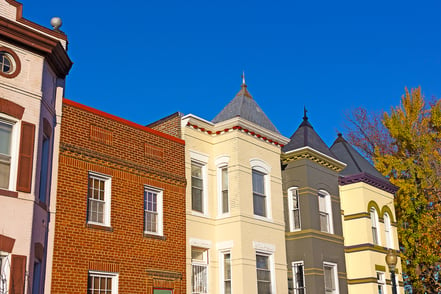When you see deterioration or cracks in your bricks and mortar, it’s never too early to consult a professional. Depending on the scope of your project, an expert in the historic preservation of old brick buildings will make a plan that takes weather, as well as the availability of a dedicated work crew, into consideration.
Nothing makes a stone or brick wall look crisper and more beautiful than proper tuckpointing. To keep up this appearance, don’t let your walls go too long without maintenance. Lack of upkeep can result in unsightly walls and expose your bricks to the elements, risking exterior wall damage and potential damage to interior surfaces and structures.
What is Tuckpointing?
Tuckpointing is the repair of deteriorated mortar between stone or bricks in a wall or structure. Over time, the mortar cracks and falls out or softens, leaving brick edges exposed to the elements and further damage. To correct this, the old mortar is removed and new mortar that matches the old material in color is applied between the bricks.
How Do I Know When Tuckpointing is Needed?
Serious indicators of necessary tuckpointing services include:
- Obvious cracking – Cracks in the old mortar that extend between bricks or stair-stepping mortar cracks that follow the edges of multiple bricks are a big sign of trouble.
- Soft mortar – Can you penetrate the mortar with a key, butter knife, or even your finger?
- Crumbling or flaking – Even if you cannot penetrate the mortar deeply, you should not be able to rub crumbling or flaking mortar off the surface between bricks.
- Missing mortar – For brick or stone surfaces to be protected from moisture and elements, mortar needs to be fully solid. When any chunks or sections of mortar are missing, something must be done. Panicking homeowners may try to patch areas for a temporary fix, but such repairs not only look terrible they don’t resolve the problem. Patching simply shoves new mortar on top of loose old mortar that will soon fall out and leave your bricks exposed. Even worse, an inappropriate mix of modern patching cement will create stress fractures on the softer surrounding bricks and mortar, leading to even larger-scale repairs.
The Best Conditions for Tuckpointing
Masonry professionals schedule jobs ahead of time, but they will have to adjust the schedule if the weather does not cooperate when the day comes to begin work.
- Above freezing temps – Tuckpointing should be done when the outside temperature is between 40° and 90° Fahrenheit.
- Dry conditions – Excessive humidity or heavy precipitation the day before or hours after tuckpointing can make it difficult for the new mortar to set properly, making it best to perform tuckpointing when the weather will be dry for a few days.
Planning Ahead for Repairs
Because competent, knowledgeable masonry professionals are often scheduled out several months, call the experts to examine your brickwork as soon as you notice a problem. They will give you an estimate and schedule a time for the work. Just remember, when the time comes the weather will be the final determinant of exactly when the work can be done.
Winter weather can be unpredictable, sometimes with long dry spells and milder temperatures but sometimes with lots of precipitation and colder temperatures. Be patient, though, as some winter days are suitable for tuckpointing, and experienced professionals will know when it’s okay to move ahead. As well, if you need tuckpointing done during the winter, there are ways to help the mortar dry faster and the walls can be tarped to retain heat and protect curing mortar.
Don’t get stressed out by your aging stone and brickwork. Renaissance Development works hard to help you schedule your tuckpointing and other stone and brick services when you need them done. If you suspect your home needs tuckpointing, don’t hesitate to get in touch. We’ll help you figure out the best approach to your tuckpointing needs.
Dec 13, 2021 4:35:43 PM


